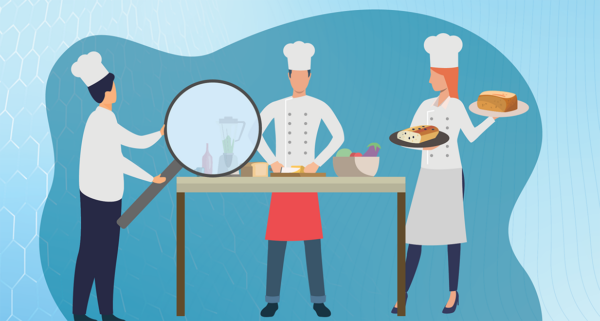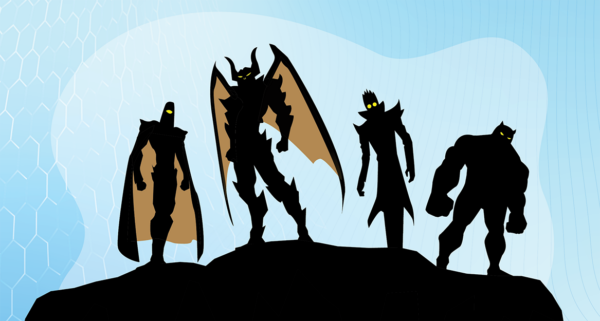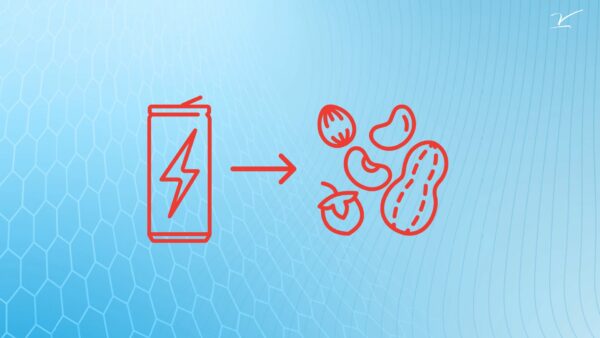Susanna’s Cool Cancer Research Finds: September 2024
Every week, Dr. Susanna Greer, the V Foundation's Chief Scientific Officer, shares her cool cancer research finds on LinkedIn. Read more below to see highlights from the latest top finds!
August 30, 2024
BRCA2: The Master Chef of DNA
For this week’s Cool Cancer Find, imagine your DNA as a recipe book that contains all the instructions needed to run your body. If a page or recipe gets damaged or torn, it’s crucial to have a system in place to repair it, so you don’t end up with unanticipated outcomes. This is where a key player called BRCA2 comes into the picture. BRCA2 is like a master chef that specializes in repairing these damaged recipes. This chef is vital because if they don’t do their job right, the body might start using the damaged recipes, which can lead to problems like cancer.
 To help with this important task, BRCA2 hires an assistant called RAD51. This assistant helps by sticking to the damaged pages, making it easier for BRCA2 to focus on where the repair work is needed. Another important part of the team is DSS1, which acts like a special magnifying glass that the master chef uses. DSS1 is a tool that helps BRCA2 ‘see’ exactly where the damage is on the recipe pages. When there’s a tear in the recipe book, BRCA2 uses DSS1 to zero in on the damaged area, then brings in RAD51 to help fix the tear. Together, they perform a precise repair job, ensuring the recipe is as good as new.
To help with this important task, BRCA2 hires an assistant called RAD51. This assistant helps by sticking to the damaged pages, making it easier for BRCA2 to focus on where the repair work is needed. Another important part of the team is DSS1, which acts like a special magnifying glass that the master chef uses. DSS1 is a tool that helps BRCA2 ‘see’ exactly where the damage is on the recipe pages. When there’s a tear in the recipe book, BRCA2 uses DSS1 to zero in on the damaged area, then brings in RAD51 to help fix the tear. Together, they perform a precise repair job, ensuring the recipe is as good as new.
Dr. Zhao’s study shows that BRCA2 has more abilities than we’ve thought. BRCA2 is not just a master chef for single pages (single-stranded DNA); it can also handle whole sections of the book that are still bound together (double-stranded DNA). Normally, this isn’t something we’d want, BRCA2 should be focusing on the single pages where the most critical repairs are needed. This is where DSS1 comes in handy: the Zhao team showed that DSS1 doesn’t just act as a magnifying glass; it also acts like a guide, helping BRCA2 to focus only on the single pages that need fixing and keeping it from getting distracted by the whole sections.
Why does this matter for cancer treatment? Understanding this teamwork gives Dr. Zhao and other researchers brand new ideas on how to tackle cancer. Developing drugs that disrupt the BRCA2-DSS1 partnership or that target how DSS1 makes BRCA2 focus, could make the DNA repair process less efficient in cancer cells. By preventing cancer cells from fixing their damage, researchers can make treatments even more effective. And that is very cool.
Read Dr. Zhao’s paper at https://www.nature.com/articles/s41467-024-51557-6 and follow the Zhao lab at Home | Zhao Lab (weixingzhaolab.org).
September 6, 2024
Protecting the City of the Brain: Researchers Fight Medulloblastoma
September is Childhood Cancer Awareness Month, and it’s a great time for us to talk about one of the most common brain cancers in children: medulloblastoma. If we imagine our brain as a city, medulloblastoma is like a group of villains that show up in different neighborhoods, causing all kinds of trouble. Researchers like the V Foundation Grantee Dr. Duane A. Mitchell, MD PhD at the University of Florida have been working hard to figure out what makes this group of criminals’ tick, and this new study from the Mitchell lab is like a superhero plan to stop them.
 Here’s the challenge: Medulloblastoma isn’t just one type of outlaw – it’s really a group of four different types, each with their own bag of bad tricks. Think of Medulloblastoma as four villain groups: WNT, SHH, Group 3, and Group 4. Each group causes damage in a different way, so oncologists use surgery, chemotherapy, and radiation (like a team of superheroes with different powers) to fight back. The problem is, while these treatments have helped a lot of kids, they can leave children with long-term side effects, and some kids still don’t survive.
Here’s the challenge: Medulloblastoma isn’t just one type of outlaw – it’s really a group of four different types, each with their own bag of bad tricks. Think of Medulloblastoma as four villain groups: WNT, SHH, Group 3, and Group 4. Each group causes damage in a different way, so oncologists use surgery, chemotherapy, and radiation (like a team of superheroes with different powers) to fight back. The problem is, while these treatments have helped a lot of kids, they can leave children with long-term side effects, and some kids still don’t survive.
In this very cool paper from Dr. Mitchell and team, they have found a better way to target the villains, using a tool they developed called O.R.A.N (which is like a super high-tech scanner) to look for specific “flags” on the villains. These flags are called antigens, and they help the immune system recognize and attack medulloblastoma. What’s really exciting is that these flags are unique to the tumors, which means the Mitchell lab and others can design treatments that are more personal to each child, kind of like having a custom superhero team for each patient.
 What does this research mean for children with medulloblastoma? Well, these findings could lead to new, more precise treatments that focus on the unique aspects of each child’s tumor, potentially reducing the side effects and improving survival rates. Instead of using the same superhero powers for everyone, researchers could design personalized attacks, making the treatment gentler and more effective.
What does this research mean for children with medulloblastoma? Well, these findings could lead to new, more precise treatments that focus on the unique aspects of each child’s tumor, potentially reducing the side effects and improving survival rates. Instead of using the same superhero powers for everyone, researchers could design personalized attacks, making the treatment gentler and more effective.
This research is a big step forward in the fight against childhood cancer, helping doctors find better ways to protect the “city” (our brain) from these villains. Outstanding work Dr. Mitchell and team; please keep it up – children with cancer need you.
You can find the Mitchell lab at https://neurosurgery.ufl.edu/faculty-staff/research-faculty/mitchell/ and read this incredible paper at https://genomemedicine.biomedcentral.com/articles/10.1186/s13073-024-01363-y
September 14, 2024
This researcher can’t be held back.
Think of your immune system as a well-trained army. Some soldiers in this army (immune cells) are fierce fighters, attacking invaders like viruses or cancer cells, while others are peacekeepers, calming the fighting down to avoid collateral damage.
 But what happens if the peacekeepers are too strong, holding back the soldiers who need to fight? This can happen with cancer, where the immune system’s peacekeepers (cells called Tregs) sometimes stop the immune soldiers (effector T cells) from attacking tumors effectively.
But what happens if the peacekeepers are too strong, holding back the soldiers who need to fight? This can happen with cancer, where the immune system’s peacekeepers (cells called Tregs) sometimes stop the immune soldiers (effector T cells) from attacking tumors effectively.
Researchers like the V Foundation grantee Dr. Jamie Spangler at The Johns Hopkins University have long been trying to boost the fighting side of the immune system using a molecule called interleukin-2, or IL-2, which acts like an energy drink for immune cells (like what my peach Monster does for me in the mornings). The problem? IL-2 powers up both the soldiers and the peacekeepers of the immune system, so it’s been hard to direct immune cell fighters to attack tumors without also activating too many immune cell peacekeepers, which can dampen the overall fight.
A very cool study from Dr. Spangler’s lab study shares a new tool the lab has created – a sophisticated molecule that acts like a guided missile for the immune system. Instead of powering up all immune cells, this molecule selectively targets the immune soldiers while holding back the peacekeepers. By fusing two molecules – one that blocks peacekeepers and another that boosts only the soldiers – this engineered molecule helps the immune system unleash its full attack power on cancer.
 The coolest part? The Spangler lab designed the molecular tool in such a way that it sticks around in the body for a long time, avoiding the quick turnover that previous approaches faced. It’s like upgrading from a short-lived energy drink to a slow-release superfood that keeps your immune system energized for longer.
The coolest part? The Spangler lab designed the molecular tool in such a way that it sticks around in the body for a long time, avoiding the quick turnover that previous approaches faced. It’s like upgrading from a short-lived energy drink to a slow-release superfood that keeps your immune system energized for longer.
The impact of this study is huge for cancer patients. By making IL-2 more effective and safer, Dr. Spangler’s research could lead to new ways to treat cancers that involve the immune system, offering hope to patients who need better options.
This type of developmental research is crucial because it improves our understanding of how to fine-tune the immune system to target cancer cells, which could lead to even more effective therapies in the future.
Follow the Spangler lab here: https://doi.org/10.1172/jci.insight.173469 and read this cool paper at: https://www.spanglerlab.org/.




